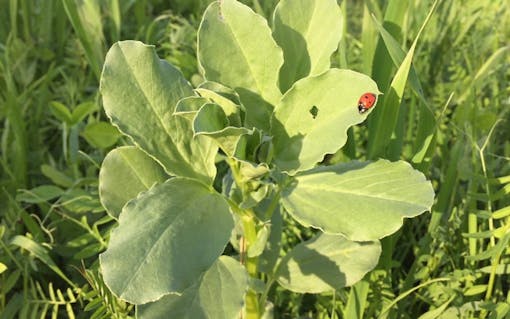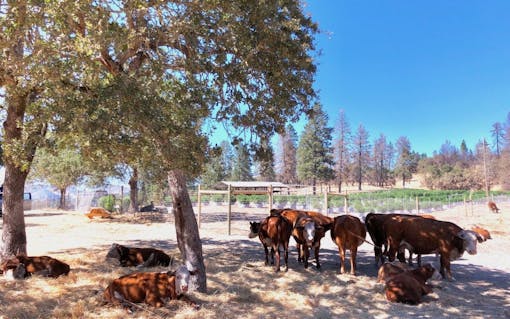It’s alive—the soil, that is.
Living soil is all the rage in cannabis cultivation. Think it’s just a marketing term? Think again: A new study conducted by Columbia University and a group of cannabis farmers compared indoor, hydroponically grown cannabis versus outdoor cannabis grown in living soil.
The results are staggering.
Cannabis grown outdoors boasted a significantly greater diversity of cannabinoids and a greater quantity of terpenes. Have we got your attention? Let’s dig in (pun very much intended).
What *is* soil?

Most people confuse soil with dirt,” says Dr. Elaine Ingham, one of the world’s leading soil biologists. “But they’re different things entirely.”
Devoid of any organic matter, dirt is simply broken-down parent rocks. “They’re simply a mineral component,” she says. You might know your soil to be sandy, silty, or clay, but all three terms are merely textural descriptions. Out of balance, they can make gardening difficult, but even when they’re in ideal proportions (a third of each, known as loam), they don’t indicate soil health.
Soil, on the other hand, refers to an entire underground ecosystem comprised of dirt along with a whole cast of characters (bacteria, fungi, and micro-arthropods (nematodes, earthworms, and spiders—invertebrates we can see) that work together to break down organic matter and release nutrients in plant-available form, a process known as nutrient cycling.


“Soil is very much a living thing,” Dr. Ingham stresses. She refers to the action happening underground as the soil food web.
This is how soil has been built for billions of years. Think of a forest—an incredibly productive environment that uses no synthetic fertilizer. It’s the soil food web that does all the work instead, building richer and richer soil over time.
Shop highly rated dispensaries near you
Showing you dispensaries nearSome issues with synthetic fertilizers
Many cannabis cultivators grow plants in a soilless medium—either coconut coir or rockwool—and irrigate hydroponically with synthetic fertilizers. The origin and application of these chemicals has proven problematic.
Dr. Ingham explains that after WWII ended abruptly, chemical companies had massive stockpiles of the explosive TNT sitting around. Where companies dumped their TNT, weeds grew better. The nitrogen in TNT is plant food. Thus, inorganic fertilizer was born. Plants grow fast when gorging on nitrogen.
“But that doesn’t mean you’re growing healthy plants,” Ingham says. “All you’re putting in is nitrogen when your plants actually need phosphorus, sulfur, potassium, zinc, iron, and more.”
An imbalanced diet makes plants susceptible to disease, and destroys the soil. All inorganic fertilizers are, by definition, salts: An inorganic material that dissolves in water. When you think about salt water, you can’t drink it or you’ll die from dehydration. It’s the same for any microorganisms in the soil: They’re killed by these fertilizers and then, bam—you have dead dirt, not living soil.
Living soil is more sustainable


Why do cannabis farmers turn to living soil, aside from the terpiest terps?
“We were in awe that you didn’t have to throw soil out every year,” says Jake Taylor of No-Till Kings. The Long Beach-based farmers recycle everything back into their soil. No-Till grinds up last year’s leaves and stems into mulch for this year’s crop, introducing even more organic matter to feed their system. “It’s an ecosystem that keeps on giving,” says Taylor.
Mike Benziger of Glentucky Farms, situated outside of Glen Ellen, California, didn’t launch his business embracing the way of living soil. For ten years he sprayed everything with fertilizer, insecticide, and herbicide. When a friend noticed there were absolutely no birds around, he realized he had essentially killed the farm. He swung far in the opposite direction and has now been Demeter-certified in what’s dubbed “biodynamic” farming for the past 22 years.
“I’ve come to realize that by far the number one thing is soil health. Biodiversity is important. Rhythms are important. Good seed stock and genetics are important. But soil health is number one,” says Benziger, whose weed won a gold medal at last year’s California State Fair.
Riding dirty
8 top brands growing indoors in soil beds, or outdoors in living soil
- MOCA Humboldt (indoor living soil), CA
- Tower Three, MA
- Gletucky Farms, CA (Demeter-certified biodynamic)
- No-Till Kings, CA (no-till indoor living soil)
- Flora and Flame, CA (no-till indoor living soil)
- Hava Gardens, CO (no-till indoor living soil)
- Upstate Elevator Operators, VT (indoor living soil)
- Lucky Elk, OR (outdoor living soil)
How to start building your own living soil

Looking to build your own living soil?
Step one—keep your hands off those bottles of synthetic fertilizers entirely. Don’t touch them. Walk away.
Second—start adding compost. All those good bacteria, fungi, and micro-arthropods live off decaying organic matter. In other words, if you build it—a compost pile—they will come.
Homemade is best, if done right. You can opt for a worm bin, a thermal pile (built all at once and allowed to heat up), or a cold pile (which you continuously add to).
Compost—homemade or bought in bags—should never smell any way other than earthy. Whether you make your own from scratch or supplement it with some store-bought black gold, it can be helpful to get one pound of really good compost and add it to your own pile (or your garden bed) to get a jumpstart on good biology.
Good, bagged compost is hard to come by. Consider microscopically testing your compost to see how it stacks up. You can find a list of labs and consultants who can direct you to regionally specific compost sources at soilfoodweb.com/consultants.
There’s so many more resources for this type of farming, commenters will chime in below.
Saving the terps…and the world


While living soil gives us the best weed available, there are other, headier reasons to build soil. The farmers we spoke to are convinced that living soil can save the world. No, really.
“Living soil on a mass scale is the way of the future,” says Taylor, of No-Till Kings. “It sequesters carbon and prevents topsoil from blowing away like in the dust bowl, creating a vacuum of fertility. Building soil is precisely what farmers can do to help the environment and build the soil for generations to come.”
For more information, check out our list of other living soil gurus, and feel free to shout out your favorite living soil farmer in the comments below!






